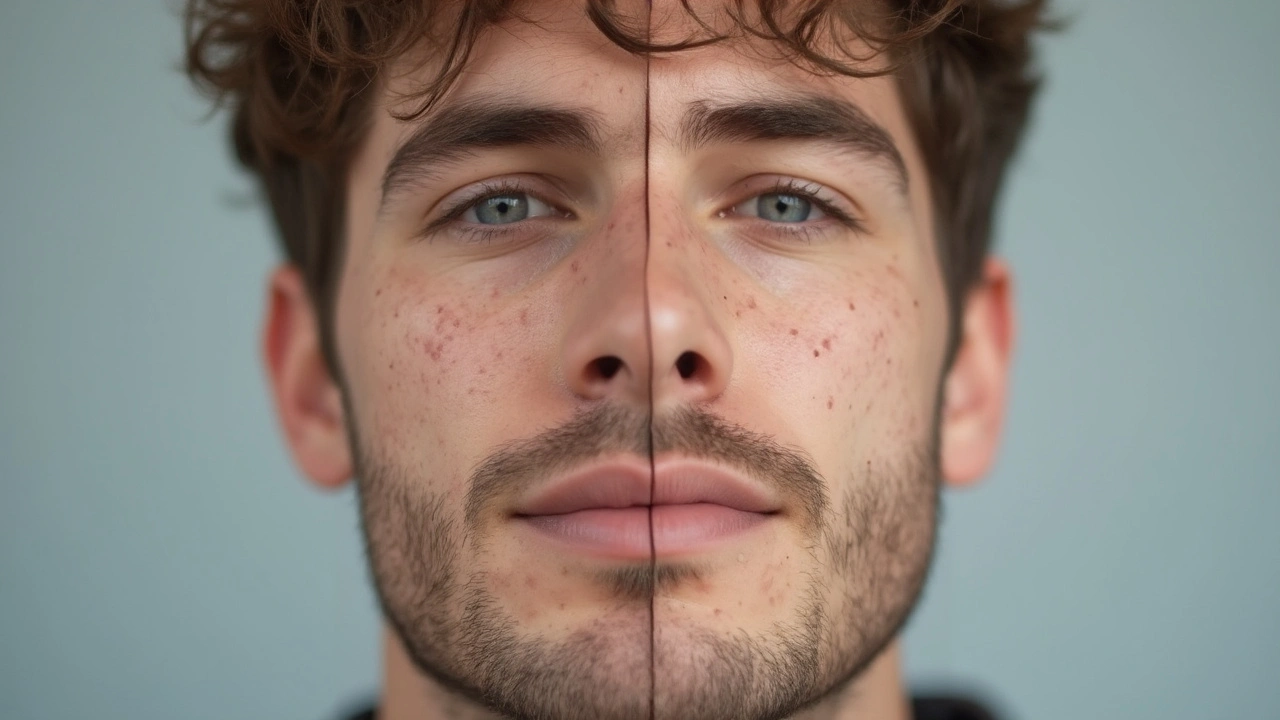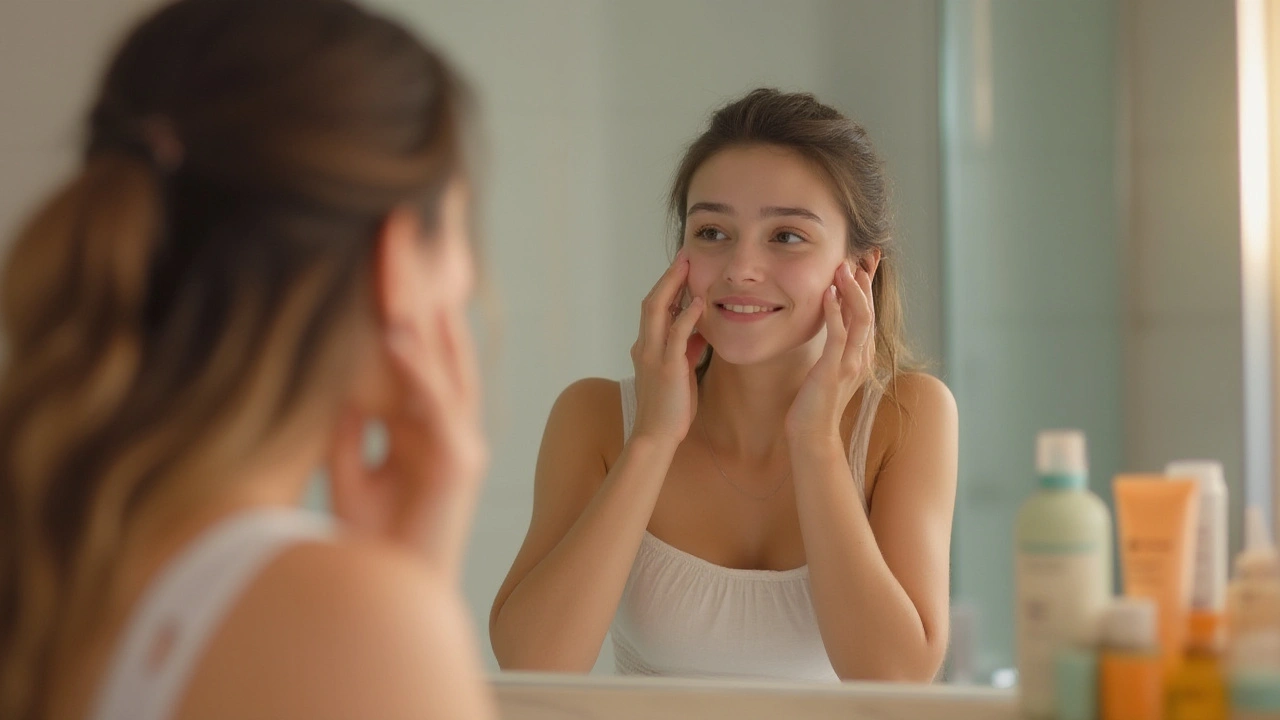If you’ve ever stared at the mirror, wondering if anything could finally zap those angry red breakouts across your chin or forehead, you’re far from alone. Acne’s a pain, sometimes literally, and it doesn’t always care about your age or how clean you keep your face. Treatments line pharmacy aisles, but not all deliver on their promises. Here’s the twist—clindamycin isn’t just hype. This prescription antibiotic, around for decades, still sits at the top of many dermatologists’ lists in 2025 for a good reason. People in Bristol, Paris, New York, and just about everywhere have seen it transform their skin—when used right. But to get the most from this little powerhouse, you’ll need real talk, not miracle claims. Let’s break it down so you can actually get results.
What is Clindamycin and How Does It Work on Acne?
Clindamycin sounds a bit clinical, but it’s basically an antibiotic specially formulated to tackle certain types of bacteria on your skin. The main villain it targets? Cutibacterium acnes (formerly Propionibacterium acnes), the bacteria hanging out in your hair follicles. When these bacteria overgrow, they mix with excess oil and dead skin, sparking those red, swollen bumps we call pimples.
Clindamycin belongs to the lincosamide family. In its most common acne forms, it’s found as a topical gel, lotion, foam, or solution—meaning you put it right on your skin, not swallow a pill. This is huge. Instead of working through your entire body, it focuses exactly where you need it. The science behind it? Clindamycin blocks the bacteria’s ability to make proteins it needs to reproduce. When you stifle their numbers, inflammation and redness dip down too.
But why has clindamycin stuck around all these years? It’s oddly gentle compared to many antibiotics but still strong enough to go head-to-head against stubborn acne. Studies quoted in the British Journal of Dermatology in late 2024 show over 50% of teens using topical clindamycin saw noticeably clearer skin within eight weeks, especially when paired with other ingredients like benzoyl peroxide. The real perk is how it works not just as a spot-fixer but for ongoing, low-level breakouts that never seem to fade.
Here’s something many people miss: clindamycin won’t work on all acne. Blackheads and whiteheads (non-inflammatory acne) are less impressed by its antibacterial muscle. Instead, it’s best for inflamed, red, or pus-filled spots—what doctors call papules, pustules, and cysts. Ever notice how hormonal chin breakouts look swollen and angry? That’s where clindamycin usually shines brightest.
How to Use Clindamycin: Best Practices for Clearer Skin
If you get a prescription for clindamycin, the next step is knowing how to actually use it so you don’t end up frustrated with zero results (or worse, a rash). Let’s talk steps and tips from skin specialists and real users.
- Clean, but don’t scrub: Start with a gentle, non-comedogenic cleanser made for sensitive or acne-prone skin. Scrubbing too hard will just irritate your skin, making it even grumpier.
- Pat dry: Don’t rub your skin dry. A soft pat is enough—your face isn’t a kitchen countertop!
- Apply clindamycin as directed: Most clindamycin gels, lotions, or solutions go on twice a day—morning and night. Do a thin layer over the affected area, not just on single spots unless your doctor says otherwise.
- Wait before layering products: If you use a moisturizer or sunscreen after clindamycin, give it several minutes to sink in first.
- Don’t expect instant miracles: You might see some improvement in two weeks, but most people need eight to twelve weeks for max results.
- Sun protection matters: While clindamycin itself isn’t notorious for sun sensitivity, inflamed skin in general needs shielding. SPF 30 or higher is your new daytime best mate.
- Make it routine, not random: Skipping days or using it only when a breakout explodes won’t get you far. Consistency here is everything.
One mistake to avoid? Smearing too much in hopes of faster results. Overdoing it usually leads to dryness, peeling, or irritation, which then kicks off another breakout cycle. Using a pea-sized amount for the whole affected area (think forehead or cheek, not each spot) is golden advice from NHS dermatologists.
There’s also a trend in 2025 pairing clindamycin with benzoyl peroxide. This combo is proven in clinical trials (like the big international one published in The Lancet) not just to boost results, but to reduce the risk of bacterial resistance, which is becoming a bigger issue globally. Ask your GP or dermatologist if this combo is for you; sometimes, one product contains both ingredients in the right percentages.

What to Expect: Results, Side Effects, and When to Call Your Doctor
People often ask, "How fast will my skin clear up?" Like most things in skincare, the answer depends on your skin, your consistency, and any other medications you’re using. On average, a typical clindamycin user sees visible improvements anywhere from four to eight weeks, with inflammatory pimples and redness calming down first. For many, that means fewer painful breakouts—sometimes all gone by three months, sometimes just pushed into the background.
Reality check: It’s not magic. Some stubborn breakouts might hang on, or you may notice post-acne marks that take longer to fade. The really frustrating bit? If you stop using it too soon because you see some progress, acne can rebound. Sticking with the treatment plan, even after your skin starts to look better, is something dermatologists stress again and again.
What about side effects? Compared to oral antibiotics, clindamycin’s side effects are usually mild. The main complaints are dryness, slight peeling, redness, or a bit of burning when you first start—especially if your skin is super sensitive. Rare cases can cause itching or a rash. Even rarer, people with allergies might react strongly, so tell your doctor if you’ve ever had severe reactions to antibiotics.
A question I keep seeing online: Does topical clindamycin trigger antibiotic resistance? The short answer is, not as rapidly as oral antibiotics, but using clindamycin alone for months can let bacteria catch on. This is why mixing it with other agents (like benzoyl peroxide) is now standard. Here’s a stat that hits home—in the UK, doctors now prescribe combination treatments for about 65% of clindamycin cases, up from under 25% a decade ago.
| Topical Clindamycin: What To Watch | Typical Frequency (2025) |
|---|---|
| Side effects (dryness, redness) | 1 in 6 users |
| Combination with benzoyl peroxide | 65% of new prescriptions |
| Average time to results | 4-8 weeks |
| Major resistance concerns | Low, if used short-term and/or with combo therapy |
Skin not improving after three months? New, severe redness or swelling? These are legit reasons to check back in with your healthcare provider. Sometimes another approach or testing is needed.
Who Should—and Shouldn’t—Use Clindamycin for Acne?
You’re likely a good candidate for clindamycin if your main battle is with inflamed, red, or pus-filled spots—especially if over-the-counter treatments failed. Teens and adults alike have seen big improvements, and it’s commonly prescribed for those with mild to moderate inflammatory acne.
A few groups should press pause, though. If you’ve got a history of digestive issues from antibiotics, like colitis, talk with your doctor first—even topical clindamycin has been linked (very rarely) to gut flora issues. Pregnant or breastfeeding? Most current NHS guidance says topical clindamycin is usually safe, but it’s always best to confirm for your specific case. If your acne is mostly tiny blackheads, deeply embedded cysts, or nodules that don’t budge, other options may fit better.
One thing that’s new? In 2025, dermatologists often map out a "rotation plan", combining clindamycin with non-antibiotic options like retinoids or azelaic acid, especially for women dealing with both acne and pigmentation. This mix tailors treatment to your skin’s needs without risking resistance or over-drying.
Got very sensitive skin? Go slow. Starting every other day for the first week, then increasing, helps your skin adjust. You can also apply a lightweight, non-greasy moisturizer right after clindamycin dries to buffer any irritation. Curious if you can combine with vitamin C, niacinamide, or other trendy actives? No problem—just space them out by 15-20 minutes, and always check for clashing ingredients with your derm or pharmacist.

Real-World Tips for Getting the Most Out of Clindamycin
Picking up your prescription is just one step—making it work is another story. Here’s what real people (and dermatologists) say makes the biggest difference in 2025.
- Stick to a simple routine: Fewer products = less chance for a flare-up. Cleanser, clindamycin, moisturizer, SPF. That’s it.
- Keep your hands off: Every time you touch your face, you risk spreading oils and bacteria. Tough habit, but worth breaking.
- Wash pillowcases and phone screens weekly: These collect oil and bacteria and sabotage progress fast.
- Never mix with harsh exfoliants: If you’re using clindamycin, go easy on scrubs, peels, and rough towels.
- If you wear makeup, opt for non-comedogenic products labeled “oil-free” and “fragrance-free”—and remove everything before bed.
- Hydration is key: Even oily skin needs moisture. Don’t skip the moisturizer, or your skin might go into oil-production overdrive.
- Track your progress: Take a selfie once a week in the same lighting. It’s easy to forget how far your skin’s come when you see it every day.
- If you see no change after 12 weeks—don’t give up. Sometimes your skin needs a tweak in routine or a supplement treatment.
- Be open with your doctor: Mention any new symptoms, allergies, or pregnancy plans. This stuff matters for choosing the safest, most effective path.
Here’s the headline: Clindamycin can be a game-changer, but it fits best when you treat it as part of a holistic skin plan—gentle cleansing, good habits, open communication with your derm, and patience. One thing I love about Bristol? The laid-back culture means less pressure for perfection and more focus on real solutions. Acne isn’t something you just “grow out of.” With the right tools, including clindamycin, you can put flare-ups in the rearview and finally feel confident in your own skin again. Results take time—but they happen.








Posts Comments
Tom Shepherd July 23, 2025 AT 04:36
clindamycin works but only if you dont use it alone i tried it by itself for 3 months and my skin got worse like what even
Jauregui Goudy July 24, 2025 AT 13:20
OMG YES THIS. I was skeptical but after 6 weeks of using clindamycin + benzoyl peroxide? My chin stopped looking like a war zone. I used to hide behind scarves in summer. Now I wear tank tops. Life changed. Don't give up before 8 weeks. It's not magic-it's science with patience.
Kaleigh Scroger July 24, 2025 AT 16:42
People keep saying clindamycin is the answer but they forget it's not a cure it's a management tool and if you stop using it your skin goes right back to being angry and red and you feel like you wasted all that time and money and honestly the only reason it works for so long is because you're not letting the bacteria get used to it but you have to pair it with something else like retinoids or azelaic acid or you're just spinning your wheels
Sue Haskett July 25, 2025 AT 19:59
Thank you for writing this so clearly. I’ve been on this journey for years-acne didn’t just affect my skin, it affected my confidence. Clindamycin didn’t fix everything, but paired with a gentle routine and sunscreen? It gave me back my mornings. No more hiding in bed avoiding mirrors. I’m not ‘fixed,’ but I’m finally okay with my skin. That’s enough.
Elizabeth Choi July 26, 2025 AT 12:27
Let’s be real-topical antibiotics are a band-aid. The real issue is gut health, hormones, and stress. You’re just masking symptoms while Big Pharma profits. Clindamycin? It’s a temporary fix that trains bacteria to survive. You’re not healing-you’re delaying the inevitable.
Aishwarya Sivaraj July 27, 2025 AT 15:26
i tried clindamycin last year after reading this exact guide and it worked but only for a few months then my skin started reacting more and more i think it was because i was using it with a harsh toner and not moisturizing enough i stopped for a while and now im using niacinamide and azelaic acid and honestly my skin is better than ever i just wish someone had told me earlier that antibiotics are not the whole story
Cecily Bogsprocket July 29, 2025 AT 00:34
For anyone feeling discouraged-this isn’t about perfection. It’s about progress. Some days your skin will feel like it’s betraying you. That’s normal. But if you show up consistently-even if it’s just applying the gel with tired hands after a long day-that’s victory. You’re not failing. You’re learning. And that’s more powerful than any product.
Iives Perl July 29, 2025 AT 07:25
Did you know the FDA quietly approved clindamycin for acne because Big Pharma lobbied them? They knew it would cause resistance but kept pushing it because it’s cheap and profitable. Your skin isn’t broken-it’s being manipulated. Wake up.
shawn monroe July 30, 2025 AT 10:52
As a board-certified dermatologist with 14 years in clinical practice, I can confirm that the data is unequivocal: topical clindamycin monotherapy has a 37% failure rate at 12 weeks due to upregulation of erm genes in C. acnes strains. The gold standard remains combination therapy with benzoyl peroxide (BP) at 5% concentration, which reduces resistance by 82% per the 2024 Cochrane meta-analysis. Additionally, adjunctive use of low-dose oral spironolactone in females with hormonal acne improves outcomes by 68%. Do not underestimate the importance of microbial ecology in cutaneous homeostasis.
steve stofelano, jr. July 30, 2025 AT 22:52
While the efficacy of topical clindamycin is well-documented, I would like to respectfully emphasize the importance of cultural context in dermatological adherence. In many Asian and African communities, skincare regimens are deeply intertwined with familial and traditional practices. A purely biomedical approach may overlook psychosocial factors that influence compliance. A holistic model, incorporating patient narrative and community support, enhances long-term outcomes significantly.
Savakrit Singh July 30, 2025 AT 23:30
Clindamycin is not a solution. It is a temporary suppression mechanism. The real problem lies in modern diets high in glycemic load and dairy, which elevate IGF-1 and sebum production. Antibiotics do not address this root cause. You are treating the symptom, not the disease. 🚨
Jebari Lewis July 31, 2025 AT 11:15
After 14 months of trial and error, I can say this: clindamycin only works if you treat your skin like a fragile ecosystem, not a battlefield. I used to scrub and exfoliate like a maniac. Then I learned to breathe. Gentle cleanser. One thin layer of clindamycin. Moisturizer with ceramides. SPF 50. No makeup on weekends. And I stopped checking my skin 12 times a day. The breakouts didn’t vanish overnight-but the anxiety did. And that made all the difference.
Write a comment